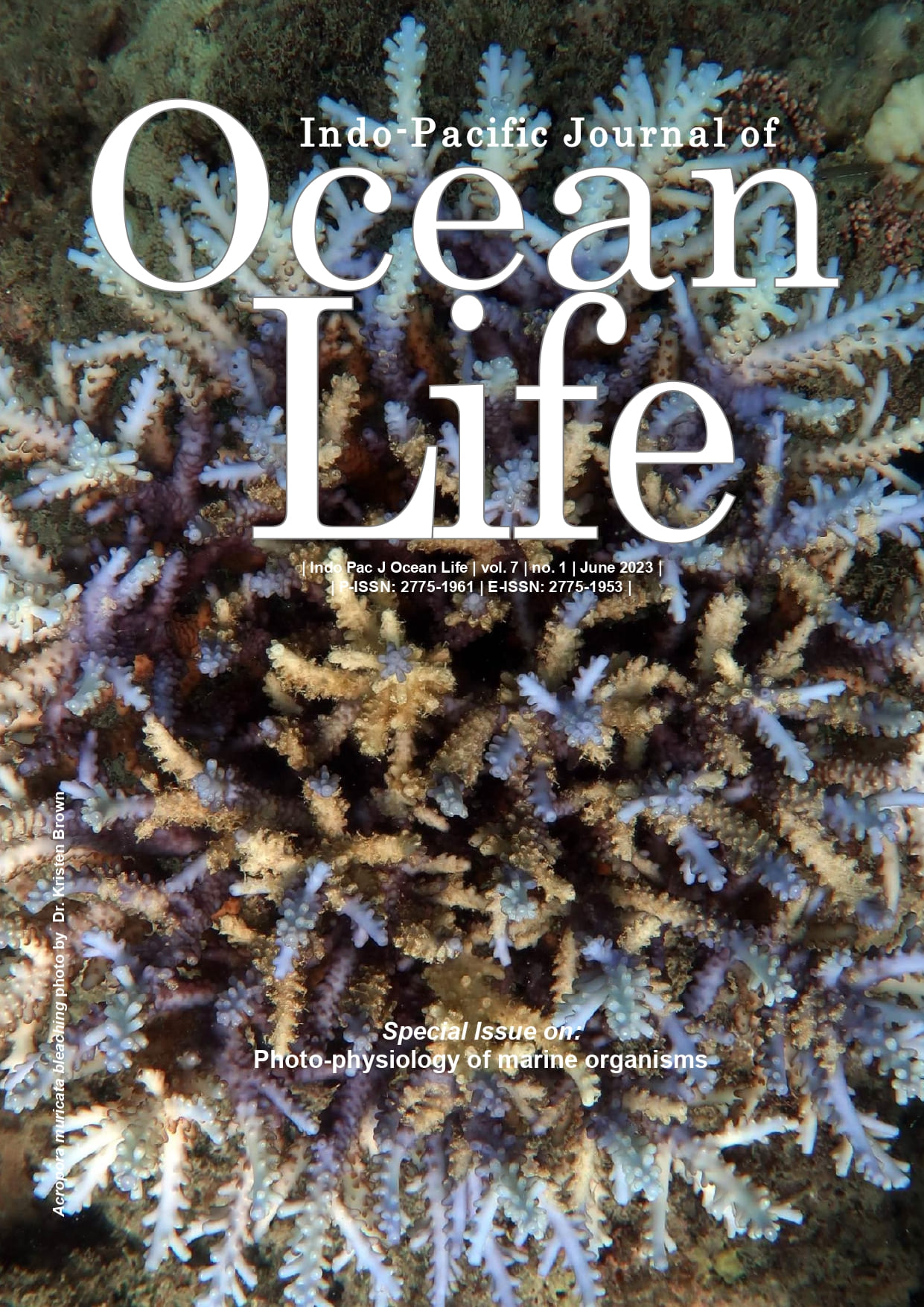Photo-physiological responses and thermal tolerance of regionally endemic/rare and morphologically different corals of the Western Indian Ocean
##plugins.themes.bootstrap3.article.main##
Abstract
Abstract. Munbodhe V, Jeetun S, Ricot M, Jogee S, Kaullysing D, Bhagooli R. 2023. Photo-physiological responses and thermal tolerance of regionally endemic/rare and morphologically different corals of the Western Indian Ocean. Indo Pac J Ocean Life 7: 100-107. Intensification in climatic variations is causing major alteration in ecosystem functionalities and an overall decline in reef biodiversity. Underlying the ongoing cumulative threats and the vulnerability to biodiversity loss in the reefs, this study aims to determine the photo-physiological response and the thermal tolerances of the morphologically different coral species namely, Porites lutea, Porites cylindrica, Acropora hyacinthus, Galaxea fascicularis, Seriatopora hystrix including the two regionally endemics of the Western Indian Ocean, Acropora branchi and Pocillopora indiania. Coral fragments from three colonies per species were collected from the south and southeast of Mauritius Island and treated at 27°C, 30°C and 32°C for 19 hours. Using a diving Pulse-Amplitude-Modulated (D-PAM) fluorometer, the effective quantum yield at photosystem II (FPSII) was recorded from the coral fragments initially and following 3, 6 and 19 hours of treatment. This experiment determined the thermal threshold of the understudied A. branchi and P. indiania, and detected the unexpectedly enhanced thermal tolerance of S. hystrix and G. fascicularis. Overall, it provides a preliminary insight into potential thermal stress tolerance in some Mauritius corals and has shown that these corals might have strategized to enhance their thermo-resilience while others are still struggling to withstand such stresses. These findings on the thermal resilience of regionally endemic/rare and morphologically different coral species are essential for further reef conservation efforts and the selection of coral species for reef restoration.
2017-01-01
